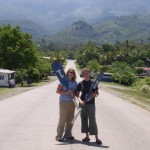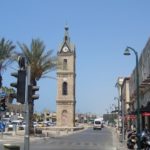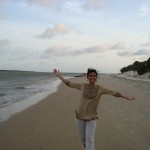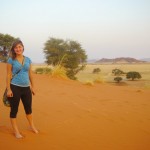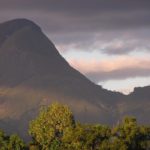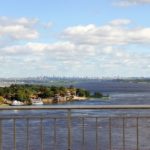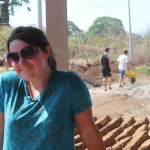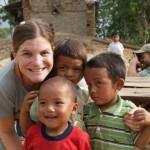Real Africa: Finding Beauty Amid Poverty, Sweat, and Sand
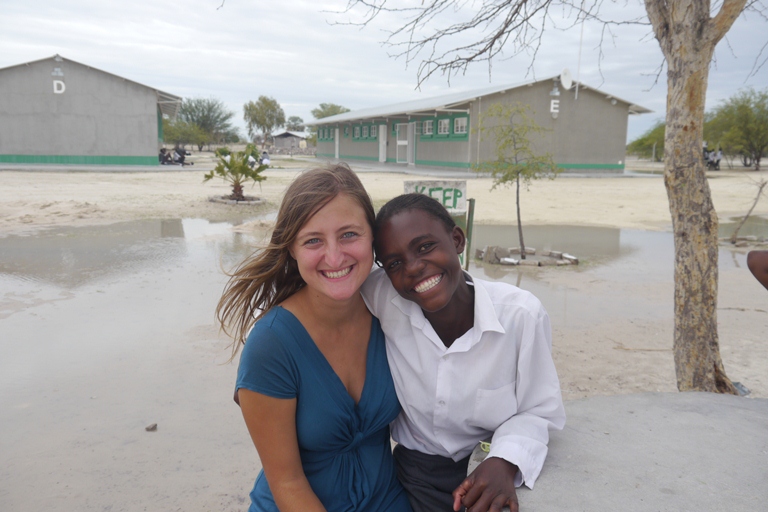

Granted, there is not much in the country’s northern cities to keep travelers entertained. The area has next to nothing in terms of historical monuments and its geology and topography are justifiably overshadowed by those of its neighboring regions.
Aside from strip malls, abundant shebeens and take-out joints selling an assortment of hot dogs and soggy fries, there is little reason to keep any passerby lingering.
And while it may seem as though I have spent this year sauntering off between the beautiful national parks of Southern Africa, the truth is that my reality has centered around this largely neglected area of the country.
Ondangwa is one of the largest urban centers of the North, boasting a population of roughly ten thousand. It is one of Namibia’s premier transportation hubs and houses many of the country’s industries.
To someone merely driving through, the city would appear much larger than it is for nearly all of the buildings are spread far apart and run parallel to the main road for several miles. Along the road, formal and informal settlements spring up and support a majority of Namibia’s population who live in corrugated metal shacks or concrete slabs of grey, rectangular housing.
Of course, for a country renowned for its wide open spaces and abundance of land, positioning buildings far from one another poses little concern.
Except to people like me who are too stubborn to take cabs around the city, but are unaccustomed to walking long distances under the sweltering African sun.
For us, navigating these northern cities is always a strenuous ordeal.
Over the course of the year, I have done my best to become accustomed to walking in the country’s hostile climate. Prior to coming to Namibia, I refused to wear sunglasses on the account that they give me an uncanny resemblance to the beetles that swarm around my house every evening. I often forewent applying sunscreen because my Mediterranean skin rarely incurred sunburns.
Here, however, things are different.
Here, the sun is too piercing to ignore. I have only to walk a few feet in the sun before rivulets of sweat cascade down my back and neck and before my shoulders and face adopt a fuchsia hue.
So, before walking to the bank or grocery store, I lather on my sunscreen and prepare for an exhausting and sweaty journey around town.
A walk down the main street in Ondangwa will take you past many cement strip malls and houses. It will take you past bars thumping popular Namibian and American songs–bars with names like “Facebook #2,” “The Place to Be” and “Fly Emirates.”
On your walk, you will notice that trash is everywhere. It litters the ground and is strewn about the streets. You will likely pass heaps of rubbish, broken glass bottles and cell phone recharge scratch-it cards. You will likely pass hungry goats scavenging through dustbins and pigs rolling in the heaps of trash. You will likely walk under the searing sun, dripping in sweat from head to toe and dodging into every shop to pick up another bottle of water or juice.
The Oshana region is hot. It is dusty, it is grey. In the rainy season, a layer of green blankets the otherwise tawny landscape and breathes life and vitality into the natural environment. At all other times of the year, the endless sea of beige reaches outward to infinity, interrupted by pockets of thorny brush and clusters of Makalani palms.
And the sand. The sand is everywhere. It permeates everything. It clings to the rivulets of perspiration that trickle down your face and back. It seeps through your shoes. It is embedded in your hair, your teeth and your nails.
Ondangwa may not encapsulate the idyllic image of Africa that is often romanticized by those wishing to foray into an exotic land. Yet, this is Africa. It pulses with life. It is alive with smells of women cooking meat, aromas of cow dung and the scent of urine. It is alive with images of children frolicking about in their matching school uniforms, elderly men and women sitting under the shade of a baobab tree and young women strutting about in high heels and trendy outfits. It is alive with the sound of honking cars and crying babies and bleating goats.
As uninspiring and drab as they appear, Namibia’s northern cities have a unique appeal–an appeal that perhaps takes some time (in my case, months) to understand. They are quirky and have their own character or, dare I say, charm. This character and charm lies beneath a grungy and largely unpolished exterior.
In more than 11 months of experiencing the southern tip of the continent, I have passed through places that many deem quintessentially “African.” Yet, I can’t help but feel that this is where the real Africa lies. The “real” Africa, like my tiny microcosm in Ondangwa, is at a cultural crossroads–a crossroads of modernity, tradition, ancestral cultures, western influences, cosmopolitan cities and rural villages.
Its climate is less than ideal, the natural and man-made wonders are few and far between and the lack of greenery and pervasiveness of sand could not be more antithetical to my notion of home. Yet, when I think of all the places in this country where I could have served my year abroad, there is no place I think I’d rather be.

